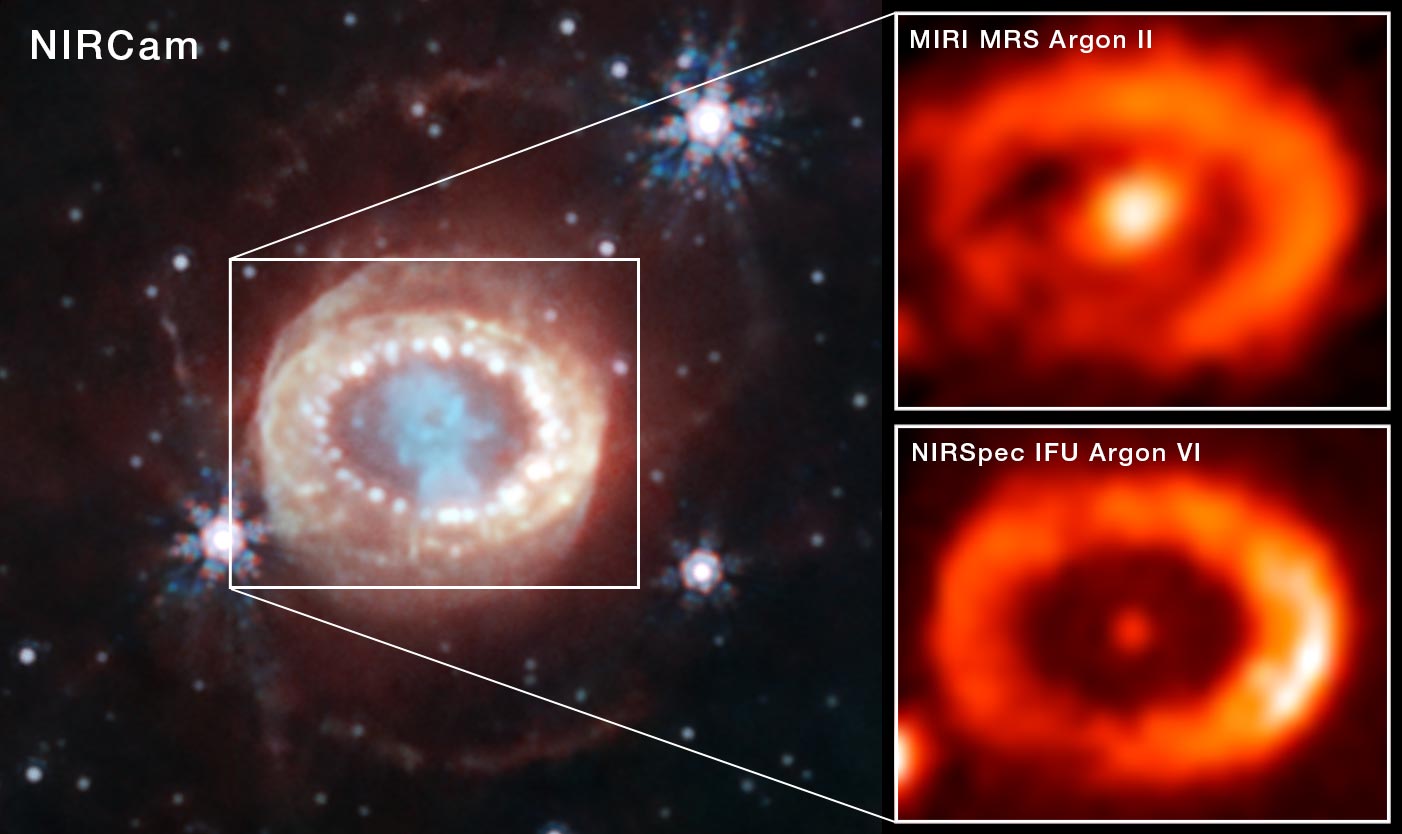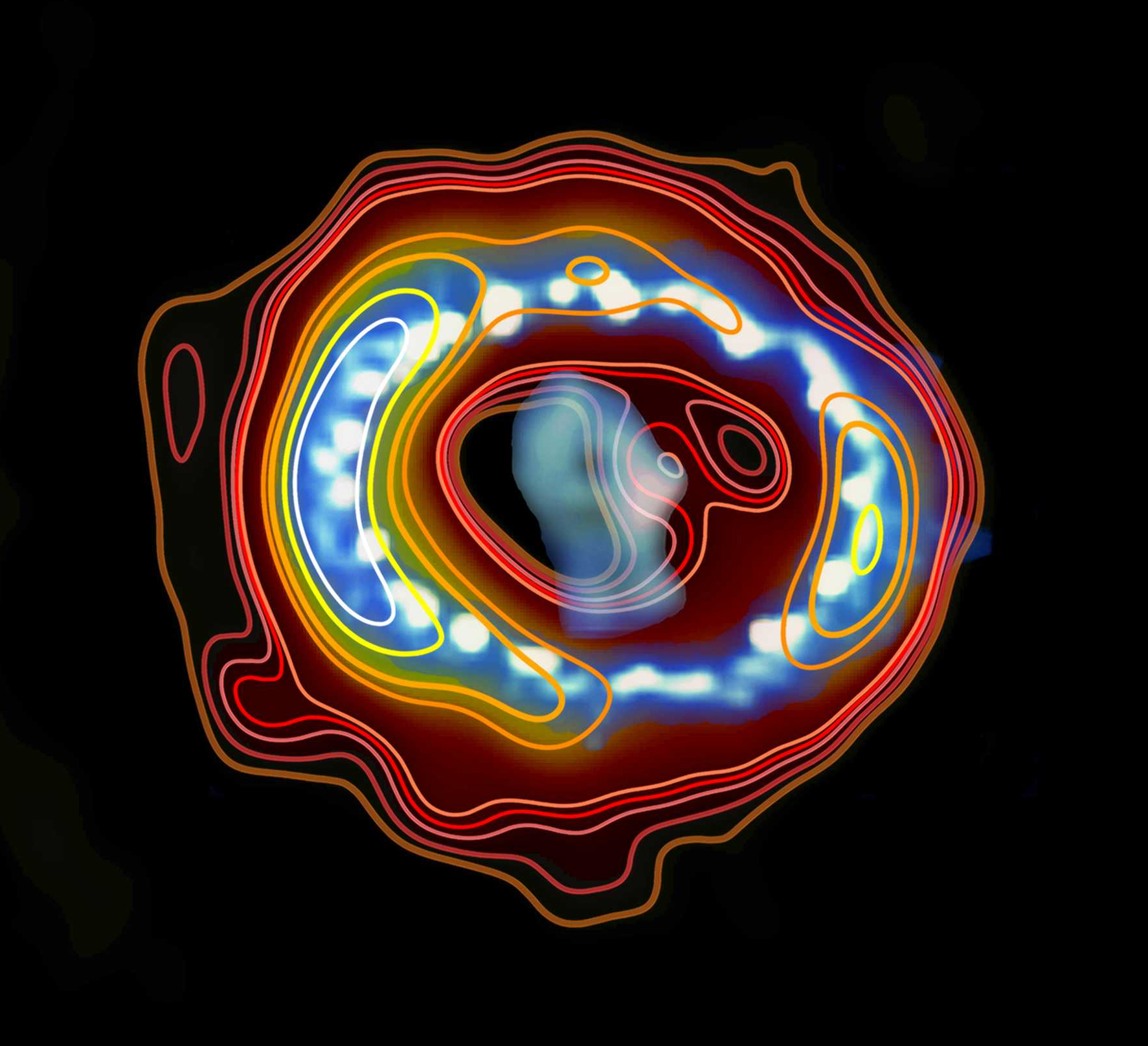Webb Telescope Uncovers Neutron Star Hidden in Supernova Debris

Why are they sure about this claim? After all, astronomers were originally quite surprised that the star that create 1987A was a blue supergiant. Their theory had held that only red supergiants could supernova. It was only after the fact that they massaged their theory to account blue supergiants. Sort of like they've massaged so many other *theories" over the past 50 years.
Also, the shape and details of the structure are quite puzzling. Dr. Chris Burrows of the European Space Agency was quoted saying that “The Hubble images of the rings are quite spectacular and unexpected,” The mainstream tried to explain the brightest ring (the one with all the dots) as being due to energy from the explosion reaching a ring of previously ejected “gas” and lighting it up. But they weren’t able to find proof that there had been a ring of matter in that location prior to the explosion. Furthermore, the ring around the object is not expanding very fast. Time lapse images from 1994 to 2014 (http://upload.wikimedia.org/wikipedia/c ... scaled.gif) showed that the ring was basically at the same location that it was twenty years earlier. Furthermore, a ring suggests matter was ejected equatorially (it it was ejected at all). One would think that a shock wave from an exploding star would show spherical, rather than axial, symmetry. We should expect some visible indication of a spherical cavity. But there is none. In fact, the mainstream has had to posit a non-spherical explosion.
Electric Universe advocates have a different explanation for what we see here. That what the mainstream says is a neutron star ... is a Z-pinch. Plasma scientist Anthony Peratt, for instance, published a paper in December of 2003 titled “Characteristics for the Occurrence of a High-Current, Z-Pinch Aurora as Recorded in Antiquity.” In it he explained the unusual characteristics of a high-energy plasma discharge from a plasma pinch as studied in the lab. A Z-Pinch is what many in the Electric Universe community believe forms stars along electricity carrying plasma filaments like those that seem ubiquitous in interstellar space. In the article he discussed how mega-ampere particle beams show a characteristic 56- and 28-fold symmetry. He wrote: “A solid beam of charged particles tends to form hollow cylinders that may then filament into individual currents. When observed from below, the pattern consists of circles, circular rings of bright spots, and intense electrical discharge streamers connecting the inner structure to the outer structure.“
He included pictures from laboratory experiments showing this phenomena, adding, to explain the number of dots, that “Because the electrical current-carrying filaments are parallel, they attract via the Biot-Savart force law, in pairs but sometimes three. This reduces the 56 filaments over time to 28 filaments, hence the 56 and 28 fold symmetry patterns. In actuality, during the pairing, any number of filaments less than 56 may be recorded as pairing is not synchronized to occur uniformly. However, there are ‘temporarily stable’ (longer state durations) at 42, 35, 28, 14, 7, and 4 filaments. Each pair formation is a vortex that becomes increasingly complex.”
Now here is a radio telescope *imaging* of 1987A:

It turns out the number of bright spots in the image is suspiciously close to 28, and the bright spots tend to be paired or in groups of three as Peratt said would be the case for a jet produced by a z-pinch. That's quite a coincidence, isn't it?
Furthermore, a z-pinch naturally takes on the hourglass shape seen in planetary nebula. There are no special conditions or mysterious magnetic fields required to produce what is observed, as is the case in the mainstream supernova models. Indeed, Dr. Charles Bruce, a British astronomer, argued 50 years ago that the bipolar shape, temperatures and magnetic fields of planetary nebulae could be explained as an electrical discharge. He was ignored by the mainstream, of course, but the results of these stellar explosions do seem to fit what plasma/electric researchers have been saying for 50 years.
